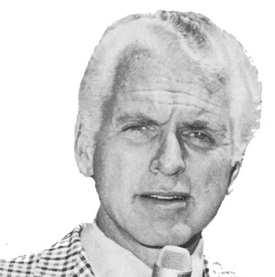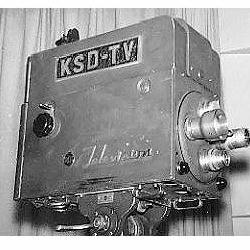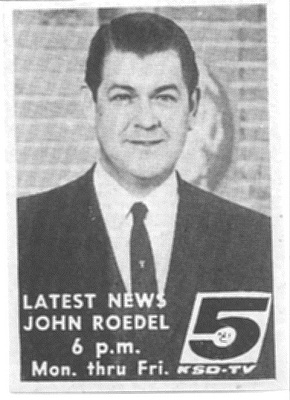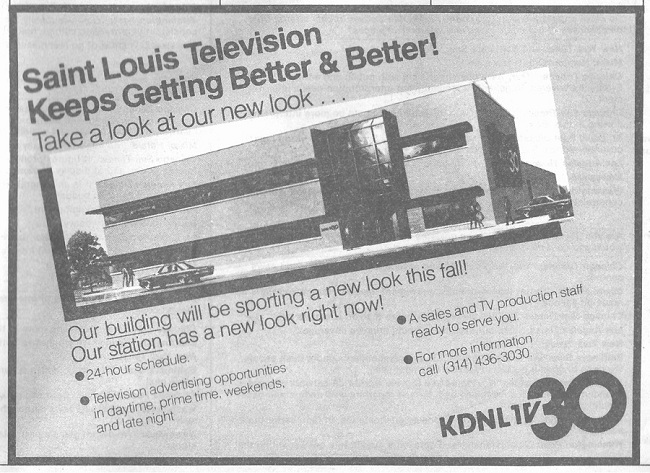Television Articles
No Skimping at KSD-TV
But There’s No Investigative Reporting Either
“News gets to be a bigger thing all the time,” says Austin Bridgman, KSD-TV News Director.
When Bridgman joined KSD-TV in 1947 (five months after the station went on the air), news segments tended to be limited to the 10-minute variety, little more than a radio announcer reading copy on camera during the dinner hour.
Today KSD-TV beams nearly three hours of news (including commercials) into the St. Louis market [daily].
“News is more popular than ever,” Bridgman said. “There’s a growing dependence on television and a growing trust in it. People used to look at television as some kind of novelty in the early days.”
A recent Roper Opinion Survey tries to show that “trust” is, indeed, being placed in television. In one comparison of radio, television, magazines, and newspapers, a study prepared for the Television Information Office showed 64 percent of 1,982 [people] interviewed said they rely on television as the source of most news. About 48 percent of those in the study found television the most believable news source, while only 21 percent counted on newspapers.
And when people watch and trust, commercial sponsors follow. Television news becomes a highly profitable item.
Need Determines Budget
“We’ve never had to skimp on news expenses,” Bridgman said. “I’ve never been told to spend this much or that little. The budget seems to always be determined by the need of the news organization. But then again that doesn’t mean we wouldn’t hear about it if we threw the money around.”
KSD-TV hardly seems to be skimping on its budget. The station reportedly pays anchorman Chris Condon about $40,000 annually and presumably pays at least that to Max Roby, newly acquired from KMOX-TV. Some reports to the Journalism Review, which the station would not comment on, have Roby making as much as $70,000 a year.
Roby’s addition brings Bridgman’s news staff to about 35 persons representing an amalgam of KSD radio and television news departments. Some of the staff swing between radio and television in producing the news for both media. Bridgman estimated that news personnel account for well over 25 percent of the total staff at the two outlets.
The future will bring a slight expansion of two or three persons when the present 6 o’clock local news half-hour blossoms into a one-hour production.
But for now the 35-man crew – newsreel personnel, writers, and on-air personalities – are responsible for around-the-clock news including a hefty dose of local television fare:
Five minute newsbreaks from the NBC networks “Today” show at 7:25 a.m. and 8:25 a.m.
A large portion of the daily one-hour “Noon Show.”
Early evening news half-hour at 5 p.m.
What Bridgman calls “the showcases” of KSD-TV news programing, the 6 p.m. and 10 p.m. half-hours.
A tag-along 15-minute midnight news report which is little more than an announcer reading off-camera while the words “KSD Eyewitness News” are projected on the screen.
KSD, KSD-TV Work Together
“There’s complete coordination between radio and television,” Bridgman said, noting that television reporters frequently carry along tape recorders for dual coverage of an event.
But “we’re completely separate from the newspaper,” he explained, saying that the only time the three Pulitzer Publishing Co. properties – KSD Radio, KSD-TV, and the St. Louis Post-Dispatch – cooperate is in renting a helicopter, “and then it’s just if we want to do it together.”
Bridgman contends that the ratings place KSD-TV news on top of the competition for both the 6 p.m. and 10 p.m. news half-hours.
While he said that “ratings are important,” he added that if the station were to aim at any specific audience (e.g., the under-30 set) it would “certainly be managing the news.
“I know network people are always talking about aiming for specific audiences,” Bridgman said, “but I don’t see that news works that way.”
He said that KSD-TV news has “no fixed formula or format” to appeal to any specific group. “I suppose we wouldn’t short the hard news for features,” he said, “but other than that I can’t think of any formula we use for building the news show.”
What about the “ha-ha” or “funny format” that has been in fashion for television newscasts across the country?
“We never did go for that,” Bridgman said. “It gets pretty outrageous sometimes. I think news people need to look more human than just cut-outs on the screen. But we’ve had no determined campaign, no flat out instructions for people to loosen up.”
He added that the closest thing to a “funny format” on KSD-TV might be John Auble’s “more relaxed attitude” during feature reports.
Bridgman generally agrees that local television does a sorry job of investigative reporting. But that’s precluded by “simply a shortage of manpower,” he said, “not a lack of interest in the community. I think the newspapers will always be doing more of it.”
He added that he couldn’t remember any recent television report at KSD-TV that came close to being called “investigative.”
(Reprinted with permission of the St. Louis Journalism Review. Originally published 5/1973).



